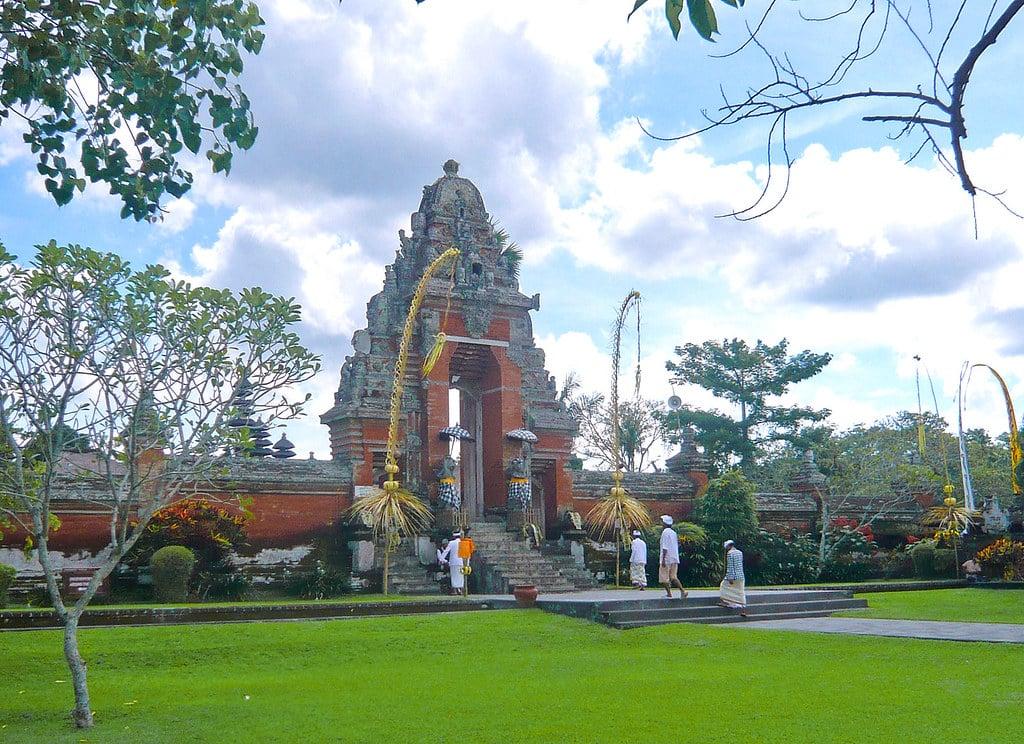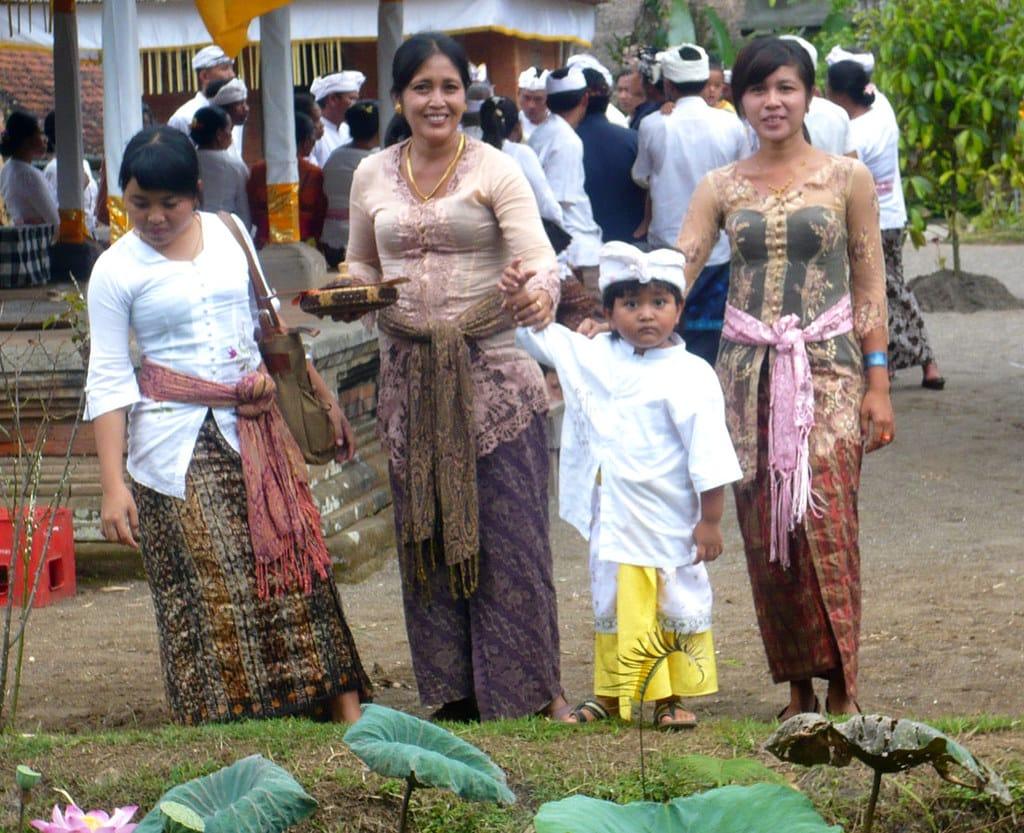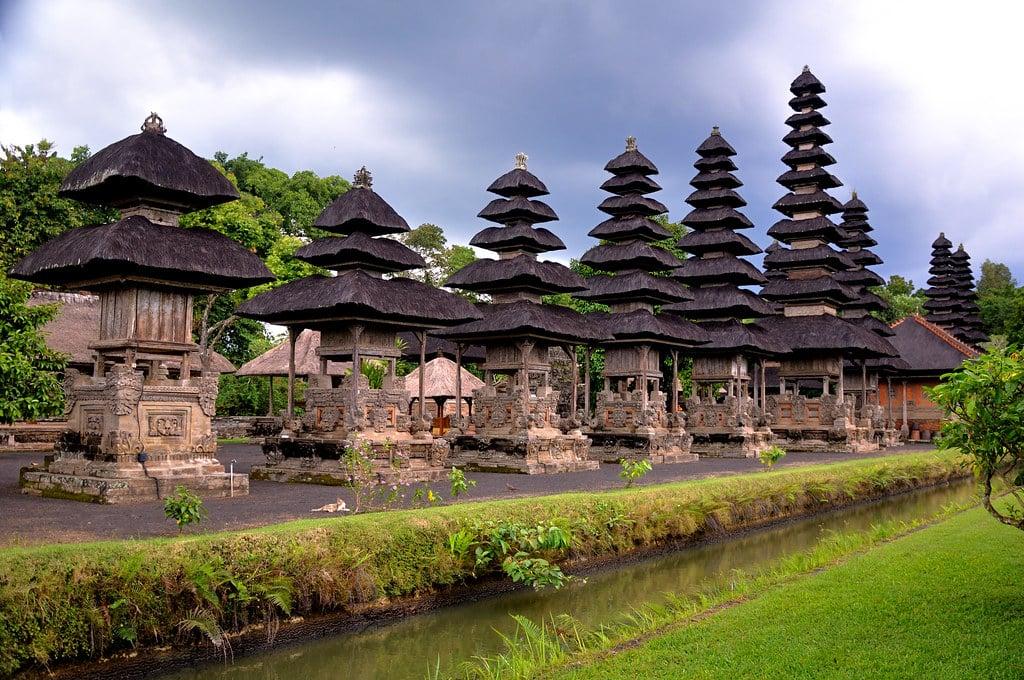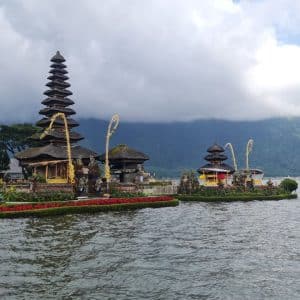Taman Ayun Temple, also known as Mengwi Royal Temple, is a stunning exemplar of historic Balinese architecture and a rich cultural heritage. Located in Mengwi, Badung Regency, Bali, Indonesia, it stands as a testament to the island’s vibrant history and tradition, offering both spiritual nourishment and visual delight to visitors from around the globe.
Historical Background
Established in 1634 by the Raja of Mengwi, Tjokerda Sakti Blambangan, the Taman Ayun Temple was later magnificently renovated in 1937. The temple complex, sprawling across a verdant landscape, was meticulously designed, combining the Balinese traditional architectural style with expansive gardens, creating a serene and picturesque environment.
Architectural Brilliance
One of the most striking features of Taman Ayun Temple is its architectural design. The temple encompasses several merus (multi-roofed shrines), intricately adorned gates, and artistic stone buildings, all set within a beautifully landscaped garden complete with lotus ponds, creating a harmonious blend of natural and man-made beauty.
Layout and Structures
The temple compound is divided into three primary areas, each representing different levels of the cosmic universe according to Balinese Hindu belief. The outermost area, Jaba, the middle, Jaba Tengah, and the innermost sanctum, Jeroan, collectively make up the spiritual layout of the temple.

Within these zones, you’ll find the towering merus dedicated to various deities and ancestral spirits, along with the majestic wantilan, a large open pavilion used for religious ceremonies and cultural performances.
Cultural Significance
Taman Ayun Temple holds immense cultural and religious significance for the Balinese people. It serves as a central place for worship and ceremonies, where the locals gather to pay homage to a plethora of Hindu gods and ancestral spirits, seeking blessings, guidance, and spiritual fulfillment.
Festivities and Events
The temple’s calendar is marked with various significant events and festivals. Among the most notable is the odalan, or temple anniversary celebration, which occurs every 210 days according to the Balinese calendar. During this period, the temple grounds are abuzz with a plethora of activities, including vibrant processions, traditional dance performances, and communal prayers, offering visitors an authentic and unforgettable cultural experience.

Visiting Taman Ayun Temple
When planning to visit Taman Ayun Temple, it’s essential to note that it is open daily from 9 a.m. to 4 p.m. Tourists should wear appropriate attire that covers the shoulders and knees, as a mark of respect to the sacred site. The temple’s serene ambiance, combined with its captivating architectural and historical allure, makes it a must-visit destination for individuals seeking to explore the depth of Bali’s cultural heritage.
In essence, Taman Ayun Temple stands as a beacon of Bali’s enduring cultural and architectural legacy, inviting global visitors to immerse themselves in its profound spiritual ambiance, historical richness, and captivating scenic beauty. A visit to this eminent temple offers a unique opportunity to delve into the heart of Balinese culture and tradition, making it an indispensable part of any Balinese excursion.












